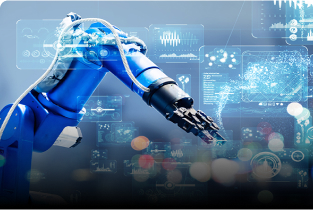The rapid advancement of technology has given rise to several exciting fields, two of the most prominent being the Internet of Things (IoT) and Robotics. Both offer immense opportunities, are transforming industries, and are shaping the future of automation and connectivity. However, if you’re considering a career in one of these fields, you might be wondering — which has better career prospects: IoT or Robotics? Let’s explore in detail.
Understanding IoT and Robotics
IoT (Internet of Things) refers to the interconnection of physical devices — from smart home systems to industrial machinery — that collect and share data through the internet. It’s all about creating smart systems that can communicate and make data-driven decisions.
Robotics, on the other hand, focuses on the design, construction, and programming of robots that can perform specific tasks — from manufacturing and healthcare to space exploration. While IoT connects devices, Robotics gives them the ability to act and perform tasks autonomously.
Career Opportunities in IoT
IoT is one of the fastest-growing fields, driving digital transformation in nearly every sector. As more devices get connected, the demand for IoT professionals is skyrocketing.
Popular IoT job roles include:
-
IoT Developer / Engineer
-
Data Analyst (IoT Systems)
-
Embedded Systems Designer
-
Network Engineer
-
IoT Security Specialist
-
Cloud Architect
Industries hiring IoT professionals:
-
Smart Homes and Cities
-
Healthcare and Wearables
-
Industrial Automation (IIoT)
-
Transportation and Logistics
-
Agriculture Technology
Skills required:
-
Knowledge of networking protocols (MQTT, CoAP)
-
Cloud platforms (AWS IoT, Azure IoT Hub)
-
Embedded C/C++, Python, or JavaScript
-
Data analytics and cybersecurity
Average Salary (India): ₹6–12 LPA
Global Average: $80,000–$120,000 per year
Career Opportunities in Robotics
Robotics combines mechanical engineering, electronics, and artificial intelligence to create machines capable of performing human-like tasks. With automation taking over industries, robotics engineers are in high demand.
Popular Robotics job roles include:
-
Robotics Engineer
-
Automation Engineer
-
Mechatronics Engineer
-
AI & Machine Learning Engineer (for Robotics)
-
Control Systems Designer
Industries hiring Robotics professionals:
-
Manufacturing and Industrial Automation
-
Healthcare (Surgical Robots, Prosthetics)
-
Defense and Aerospace
-
Agriculture and Autonomous Vehicles
-
Research and Education
Skills required:
-
Programming (Python, C++, ROS)
-
Control Systems and Sensors
-
Machine Learning and Computer Vision
-
Mechanical Design and Simulation
Average Salary (India): ₹7–15 LPA
Global Average: $90,000–$130,000 per year
IoT vs Robotics: A Comparative Overview
| Aspect | IoT | Robotics |
|---|---|---|
| Core Focus | Connectivity & Data Exchange | Automation & Physical Task Execution |
| Primary Skills | Networking, Cloud, Data Analytics | Mechanical, Electronics, AI, Control Systems |
| Industries Impacted | Healthcare, Smart Cities, Agriculture | Manufacturing, Defense, Space, Medicine |
| Learning Curve | Easier for software-oriented learners | Steeper, requires interdisciplinary skills |
| Career Demand | High and continuously expanding | High, especially in automation-driven industries |
| Future Scope | Dominant in smart infrastructure and AI integration | Strong growth with AI and industrial automation |
Which Has Better Career Prospects?
Both IoT and Robotics offer strong career growth, but the better option depends on your interests and background:
-
If you’re inclined toward software, data, and networking, IoT might be the right fit.
-
If you love mechanics, automation, and AI, Robotics could be more fulfilling.
From a market growth perspective, IoT currently offers broader opportunities, especially in smart devices, data analysis, and cloud integration. However, Robotics is fast catching up as industries invest heavily in automation and AI-powered systems.
Final Thoughts
The line between IoT and Robotics is increasingly blurring, with many innovations combining both — think of autonomous drones, smart factories, or connected robots. Ultimately, the future belongs to professionals skilled in both domains.

